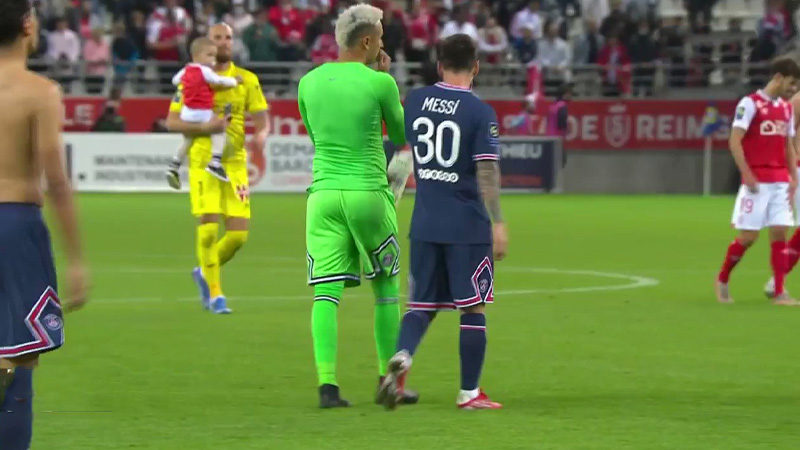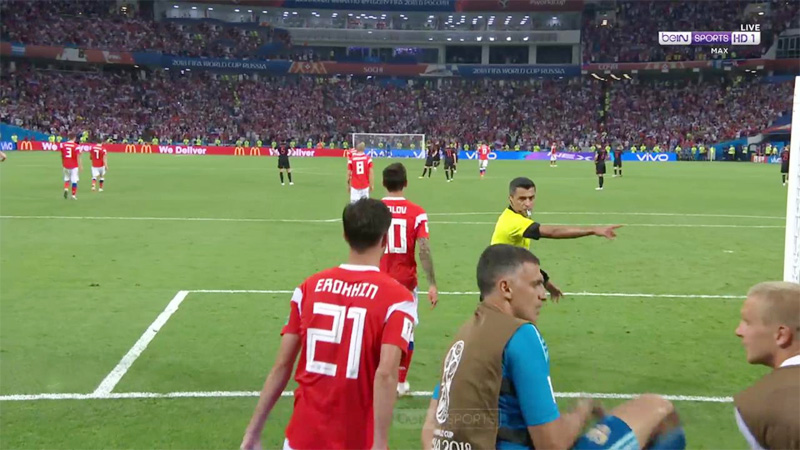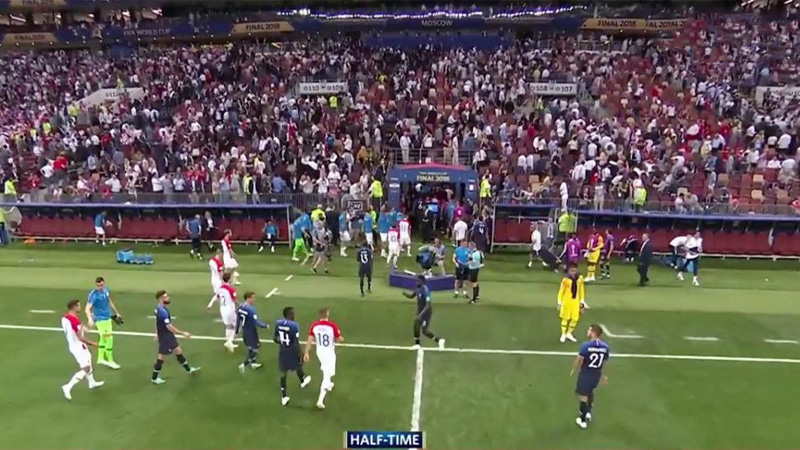Soccer, the beautiful game, captivates millions of fans worldwide with its thrilling action and strategic gameplay. While the game itself is the main attraction, the halftime break serves as a crucial intermission, allowing players to recharge and coaches to strategize.
However, the halftime period is not just a time for rest; it also has its own set of rules and strategies that can significantly impact the outcome of a match.
In this article, we delve into the often-overlooked world of soccer halftime rules. From the duration of the break to the activities permitted, we explore the guidelines set by governing bodies to ensure fairness and maintain the game’s integrity.
Additionally, we uncover the strategies employed by teams during halftime, including tactical adjustments, motivational speeches, and physical recovery techniques.
Whether you’re a die-hard soccer fan or a casual observer, understanding the intricacies of halftime rules will enhance your appreciation for the game and shed light on the behind-the-scenes efforts that contribute to a team’s success.
What Are the Soccer Halftime Rules?
Soccer halftime rules are a set of guidelines established by governing bodies to regulate the duration, activities, and conduct during the halftime break in a soccer match.
These rules ensure fairness, maintain the integrity of the game, and provide teams with an opportunity to regroup, strategize, and make necessary adjustments. In this detailed explanation, we will explore the various aspects of soccer halftime rules.
Duration of the Halftime Break

The duration of the halftime break in soccer matches is typically set at 15 minutes. This period allows players to rest, rehydrate, and receive any necessary medical attention.
The time allotted for halftime is consistent across different levels of the game, from amateur to professional.
Activities Permitted During Halftime
During halftime, players are allowed to leave the field and retreat to their respective locker rooms or designated areas. They can use this time to rest, receive medical treatment, change equipment, and rehydrate.
Additionally, coaches and team staff have the opportunity to address the players, provide tactical instructions, and motivate the team for the second half.
Prohibited Activities During Halftime
While players are permitted to leave the field during halftime, there are certain activities that are strictly prohibited.
These include engaging in any form of training, practicing, or warming up on the field.
Players must also refrain from receiving any form of coaching or instruction from their coaches or staff members while on the field during halftime.
Return to the Field
At the end of the halftime break, players are required to return to the field promptly.
The referee will signal the end of the break, and both teams must be ready to resume play within a reasonable time frame. Failure to return to the field on time may result in penalties or disciplinary action.
Conduct During Halftime
Players and team staff members are expected to conduct themselves in a professional and respectful manner during halftime. Any form of unsportsmanlike behavior, including verbal or physical altercations, is strictly prohibited. This applies to both players on the field and team staff members in the technical area.
Medical Treatment and Injury Assessment
Halftime provides an opportunity for players to receive medical treatment or have injuries assessed by the team’s medical staff.
If a player sustains an injury during the first half, the medical staff can use this time to evaluate the severity of the injury and determine the player’s fitness to continue playing. In some cases, players may be substituted or receive further treatment during halftime.
Tactical Adjustments and Strategy
Halftime is a crucial period for coaches and players to analyze the first half’s performance, make tactical adjustments, and devise strategies for the second half.
Coaches may use this time to address specific areas of improvement, change formations, or make substitutions to enhance the team’s performance. Players can also provide feedback and discuss their observations with the coaching staff.
Mental and Physical Preparation
In addition to tactical adjustments, halftime allows players to mentally and physically prepare for the second half. Coaches may deliver motivational speeches to boost morale and inspire the team.
Players can use this time to refocus, recharge, and mentally prepare themselves for the challenges ahead. Physical recovery techniques such as stretching, massage, and hydration are also commonly employed during halftime to optimize performance in the second half.
Halftime Entertainment
In some matches, especially high-profile or televised games, halftime may feature entertainment activities to engage the crowd and enhance the overall match experience.
These activities can include musical performances, dance routines, or promotional events. However, it is important to note that these entertainment activities should not interfere with the players’ preparation or disrupt the flow of the game.
Halftime in Extra Time or Knockout Matches
In knockout matches or matches that go into extra time, the halftime break may be extended. This extension allows players additional time to recover and receive instructions from their coaches. The duration of the extended halftime break is determined by the governing body or competition regulations.
Soccer halftime rules govern the duration, activities, and conduct during the halftime break in a soccer match. These rules ensure fairness, maintain the integrity of the game, and provide teams with an opportunity to regroup, strategize, and make necessary adjustments.
From the duration of the break to the activities permitted, understanding and adhering to these rules contribute to the smooth running of the game and the overall success of the teams involved.
The Length of Halftime in Soccer

The length of halftime in soccer matches is typically set at 15 minutes. This duration is consistent across various levels of the game, from amateur to professional. The 15-minute halftime break allows players to rest, rehydrate, receive medical attention if needed, and regroup with their teammates and coaches.
The decision to set the halftime duration at 15 minutes is based on several factors.
- Firstly, it provides players with a sufficient amount of time to recover physically and mentally from the first half of the match. Soccer is a physically demanding sport, and the halftime break allows players to rest and recharge their energy levels.
- Secondly, the 15-minute duration allows for any necessary medical treatment or injury assessment. If a player sustains an injury during the first half, the medical staff can use this time to evaluate the severity of the injury and determine the player’s fitness to continue playing.
- Additionally, the 15-minute halftime break provides an opportunity for coaches and players to analyze the first half’s performance, make tactical adjustments, and devise strategies for the second half.
- Coaches may address specific areas of improvement, change formations, or make substitutions to enhance the team’s performance. Players can also provide feedback and discuss their observations with the coaching staff.
It’s worth noting that in knockout matches or matches that go into extra time, the halftime break may be extended. This extension allows players additional time to recover and receive instructions from their coaches.
Overall, the 15-minute halftime duration strikes a balance between providing players with sufficient rest and allowing for necessary activities such as medical treatment, tactical adjustments, and mental preparation.
It ensures that the game flows smoothly while giving teams the opportunity to regroup and strategize for the second half.
Length of Halftime at High School Level Soccer
At the high school level of soccer, the length of halftime is typically set at 10 minutes. This duration allows players to take a short break, receive any necessary medical attention, and regroup with their teammates and coaches.
The decision to set the halftime duration at 10 minutes in high school soccer is based on several factors.
- Firstly, it provides players with a brief period to rest and recover from the physical demands of the first half. High school soccer matches can be intense, and a shorter halftime break allows players to catch their breath and recharge their energy levels.
- Secondly, the 10-minute halftime break allows for any necessary medical treatment or injury assessment. If a player sustains an injury during the first half, the medical staff can use this time to evaluate the severity of the injury and determine the player’s fitness to continue playing.
- Additionally, the shorter halftime duration encourages teams to make efficient use of their time for tactical adjustments and strategy discussions. Coaches and players have a limited window to analyze the first half’s performance, make necessary adjustments, and devise strategies for the second half.
- Note that the specific duration of halftime in high school soccer may vary slightly depending on regional or organizational rules. Some leagues or associations may opt for a slightly longer or shorter halftime break, but 10 minutes is a common duration observed at the high school level.
FAQs
Can players leave the field during halftime?
Yes, players are allowed to leave the field during halftime. They typically retreat to their respective locker rooms or designated areas to rest, receive medical treatment, change equipment, and rehydrate.
Are players allowed to receive coaching or instruction during halftime?
While players are permitted to leave the field during halftime, they must refrain from receiving any form of coaching or instruction from their coaches or staff members while on the field.
Can teams make substitutions during halftime?
Teams are allowed to make substitutions during halftime. This provides an opportunity for coaches to make tactical changes or replace injured or fatigued players.
However, it’s important to adhere to the substitution rules set by the governing body or competition regulations.
Are there any restrictions on halftime activities?
During halftime, players and team staff members are expected to conduct themselves in a professional and respectful manner. Any form of unsportsmanlike behavior, including verbal or physical altercations, is strictly prohibited.
Can halftime be extended in certain circumstances?
In knockout matches or matches that go into extra time, the halftime break may be extended. This allows players additional time to recover and receive instructions from their coaches.
The duration of the extended halftime break is determined by the governing body or competition regulations.
Bottom Line
As the halftime whistle blows and players retreat to the locker rooms, the importance of soccer halftime rules becomes evident.
It is during this brief intermission that teams have the opportunity to regroup, strategize, and make the necessary adjustments to turn the tide of the game.
From the duration of the break to the activities permitted, these rules ensure a fair and balanced playing field.
By delving into the world of soccer halftime rules, we have gained a deeper understanding of the game’s intricacies and the strategies employed by teams to gain an edge.
Whether it’s a tactical adjustment, a motivational speech, or a physical recovery technique, halftime is a crucial period that can make or break a team’s performance.
So, the next time you watch a soccer match, pay attention to the halftime proceedings. Behind the scenes, coaches and players are working tirelessly to seize the momentum and secure victory.
Understanding the rules and strategies of soccer halftime will undoubtedly enhance your appreciation for the game and the efforts exerted during this pivotal period.







